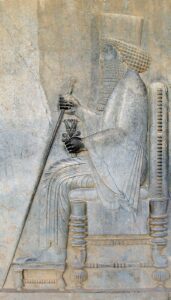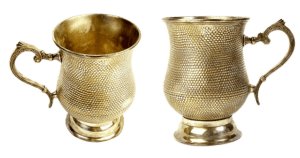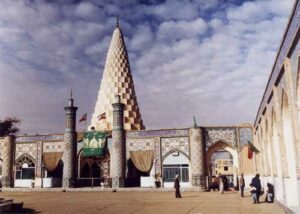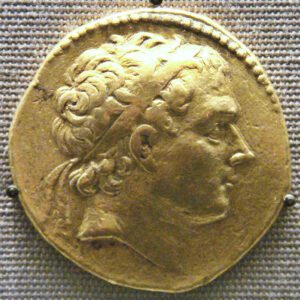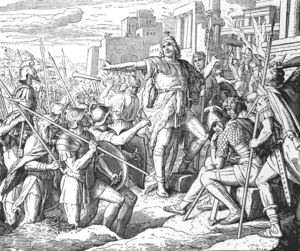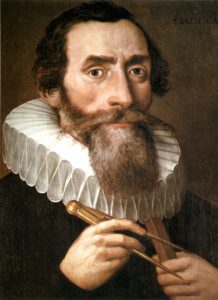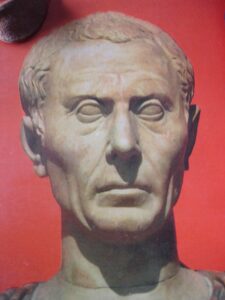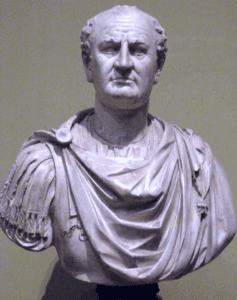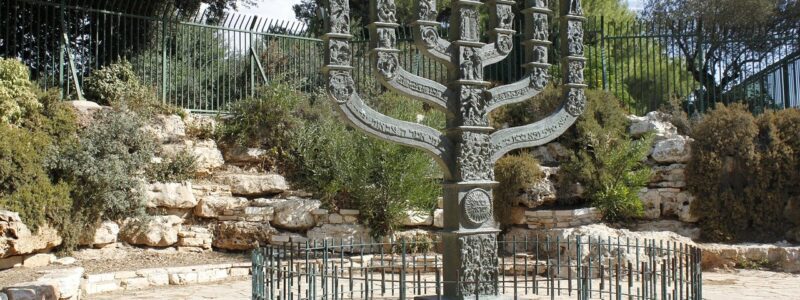The Christmas Star
One of the most beloved stories around the time of Christmas concerns the Christmas star. Who were these Magi, and why would they be so interested in a country far away they most likely had never seen? It would have been very dangerous for a caravan of rich people to travel months throughout the countryside as they would be an obvious target for thieves.
There were important people in other countries all throughout the Middle East at that time – why would the Magi be so interested in this particular one?
Recent developments in computer science and astronomy in general have generated possible answers to these questions. Jeffrey would be discussing these issues with the angel who might be able to provide some answers. After all, the angel was likely there at the time of Christ’s birth along with the rest of the Heavenly Host.
Christmas Time
It was getting to be Christmastime in Philadelphia. Street decorations were everywhere, bright Christmas string lights were hung in store windows, wreaths on doors

Image by Free-Photos from Pixabay
and garland decorated some of the stoplights in Center City. Christmas tunes are occasionally heard leaking through doors like the cigarette smoke from corner bars; Silver Bells, Rudolf the Red-Nosed Reindeer, I Saw Mommy Kissing Santa Claus; but curiously absent were the religious songs. No Silent Night, Little Town of Bethlehem (although it was composed in Philadelphia), or It Came Upon a Midnight Clear.
Christmas has become more commercialized over the past few decades, hardly being a religious holiday at all anymore. Large groups of people singing carols going from door to door in neighborhoods is a relic of the past. Sure, there were still small groups of church members visiting local nursing homes or hospitals but even these were becoming less common.
To wish somebody “Merry Christmas” is increasingly seen as being not inclusive, assuming somebody to be sharing the sentiment of Christmas or the religious intonations of the holiday. Christmas is now called “Xmas” in most advertisements for gifts to buy for the holiday. Christmas trees are now termed “Holiday Trees” and secular schools no longer sing “O Holy Night” without running the risk of complaints from offended atheists.
There seemed to be a contagious excitement as shoppers hurriedly tramped through the freshly fallen snow to purchase another must-have gift and pencil out another item from their long gift list. Mothers were whipping out their credit cards to spend money they didn’t have for gifts that would be a little appreciated and often broken or lost after only a few days. They have only the memory of those precious moments when their children anticipated opening their gift and the January arrival of credit card bills.

Image by Bruno /Germany from Pixabay
Christmas had become almost a rite of passage for new parents who feel obligated to pamper their spoiled children just as they were pampered by their parents. Other less fortunate children might get little or nothing in their stockings and are reminded once again of their poverty and lack.
Depression is very common during the holidays. We are reminded of family and friends who are no longer with us, and of good times in the past, we can no longer share.
These things were noticed by Jeff as he left work to go home. Shoppers – usually only a minimal inconvenience blocking his quick exit from work now became much more of a barrier to his evening routine. Jeff had a young maiden in tow from work; he would be taking one of the new young female interns home to show her a “good time” – and to teach her the stock business. Of course, Jeff had much more in mind than an educational session with Mindy; after a few drinks to celebrate the season of course, he would slip some gamma-hydroxybutyric acid – the rape drug – in her drink to knock her senseless. He would then have free reign with her body all night until she finally woke up a few hours later.
Unfortunately for Jeff, his own alcoholic drink combined with his exhaustion from work causing him to fall asleep on the sofa before being able to drug his unsuspecting intern. Not exactly knowing what to do at that point, Mindy collected her belongings, left Jeff a polite note, and simply left. She was fortunate to get away; fortunate not to have joined the long list of Jeff’s conquests who woke up in a much-compromised situation.
The Angel Returns
As with his other visitations, Jeff in his dream became aware of an intensely bright light permeating his consciousness. The intense light originated from all directions and made him feel suspended in the air with only a vague sense of support from his bed. The light brightened until it was just barely tolerable until he was just feeling some discomfort from its effect. A loud voice announced the angel’s presence in the room, and Jeff knew it was time for another long night of instruction and teaching.
“Son of Earth, have you no shame, have you no morality at all for what you intended to do to that poor girl who foolishly trusted you? Have you not learned anything at all from my prior visits?”
“Look, Angel, I don’t ask you here, you’re an uninvited guest in my house – I don’t need and don’t want any lectures. Now get on with it if you must.”
“Son of Earth, we know there are no humans who cannot be redeemed while alive, but you are certainly not helping yourself. You are solely responsible for your position in eternity; whether you spend that eternity with God or without is totally your choice.”
“Yea, whatever.” Jeff contemplated his lost prospects with Mindy and was more than a little distressed at his lost opportunity.

Christmas Star – Image by Gerd Altmann from Pixabay
“Son of Earth, we are tonight going to discuss Christmas. More specifically, we will discuss its true meaning and have a history lesson. I was there, Son of Earth, with the shepherds in the field as they were surrounded by the light from thousands of angels – I was one of those angels. You know the light from my presence, imagine the light from countless thousands of us! As Scriptures say, the shepherds were very frightened, many screamed in terror and fled for their homes, but most followed us to see the baby Christ child in his mother’s hands. It was a beautiful sight; the Creator of the Universe being held by his earthly mother.”
“Sounds wonderful, Angel,” Jeff said in a disinterested voice, knowing there was no exit from his lesson and dreading another night without rest.
“But what I am going to discuss with you tonight, Son of Earth, is not so much about the birth of Christ but about the events surrounding that birth. Did you know, Son of Earth, that much has been discovered recently about the birth, that there is a new understanding about the historicity of these events, and that their occurrence is now firmly established?”
“I don’t get it, Angel – what do you mean the historicity of those events? I know they’re a nice story and everything, but historians have clearly shown much of the story to be just a myth, a nice story for the kids during the Christmas season, but actual events – please.”
“What we are going to discuss tonight is the historicity of the Christmas Star. Do you know what that star was?”
“Of course – it was a fable! There is no indication from historical records of such a brilliant star shining for weeks to guide a bunch of ‘Wise men’ from some eastern country. For example, there is nothing in any culture such as the Chinese, Aztec, and Native-Americans to indicate such a wondrous event occurred. Fable; pure and simple.”
“Yes, that would be difficult to understand if the Christmas Star were a supernova, comet, or meteor. A time factor becomes important; for example, a meteor would be visible only momentarily and a comet may be visible for a few days at most. A comet was considered an evil omen by ancient civilizations and not likely to cause a caravan of ancient intellectuals to travel hundreds of miles.’
“Also,” the angel continued, “we know of no supernova from that time period; none was reported by any other civilization. A supernova is only visible for a few weeks at most – again, not fitting the Biblical narrative. I am going to show you some verifiable history concerning Christ’s birth. For example, do you know who the Magi were?”
“Yea, sure – they were the three wise kings who brought gifts to Christ – let’s see, if I remember right, the gifts were gold, frankincense[1] and myrrh.”[2]

Image by OpenClipart-Vectors from Pixabay
“You are right, Son of Earth, that there are many myths mixed in with the true story of the Magi. Nowhere in the Bible is it mentioned there were only three Magi; it has been assumed there were only three Magi since there were only three gifts brought. However, there were really many Magi who came to Israel, and with them were their guards, horses, and attendants.
They were called ‘Magi’ from the Latinized form of the Greek word magoi which was transliterated from a Persian word for a select sect of priests. As the years passed, traditions were established concerning this group. For example, by the third century they were considered kinds, and by the sixth century, they had names (Bithisarea, Melchor, and Gathaspa. These are all interesting traditions but have no basis in fact.”
“So what, Angel?”
“The actual Magi were part of a hereditary priesthood of the Medes credited with profound religious knowledge. Darius the Great[3] – one of the greatest kings of Persia ruling from 522 – 486 BC. is credited with expanding the role of the Magi to being head over the state religion of Persia.[4] His kingdom included much of West Asia, the Caucasus, parts of the Balkans, most of the Black Sea coastal regions, parts of the North Caucasus, Central Asia as far as the Indus Valley (India) of the Far East, and portions of north and northeast Africa including Egypt, eastern Libya, and coastal Sudan.[5] [6] For some historical perspective, he is the king of the Persian force that invaded Greece – an adventure that ultimately ended in failure at the Battle of Marathon in 490 BC[7] (after which the ‘marathon’ is named). Darius is credited with spreading the influence of the Magi throughout the Persian Empire – an Empire that still held great influence at the time of the Romans.”
“Again, Angel – interesting, I suppose – but let’s quickly get to the relevance.”
“Son of Earth, I am amazed at your impatience. You are receiving a history lesson from somebody who knows more about the ancient world than any man alive – because I actually witnessed it. But I will hasten my story in recognition of your impertinence.”
“Thanks.”
“Do you know who the Prophet Daniel was?”
“Of course, Angel – he was a prophet – that wasn’t too hard!”
“Anything else,” the angel said with some impatience.
“He was the author of one of the book of the Bible – Daniel – and he was taken to Babylon when the Babylonian armies captured Jerusalem – right?”
“You are correct. Three years after the Babylonians captured Jerusalem in 606 BC, Daniel was captured and taken to Babylon as a prisoner. He was a young teenager at the time but he receives the confidence of Nebuchadnezzar, King of Babylon, and is placed in a leadership position in the Persian palace.”
The Magi – the “Wise Men”
“The Magi have an important position in the Christmas story along with the Christmas Star, so we are going to stop here and have a history lesson concerning them.”
“As we noted previously, Son of Earth, Daniel was a young teenager when Jerusalem was first attacked by the Babylonians in 605 BC and he was taken back to Babylon. He was chosen to be educated for three years in the exclusive Babylonian school of Chaldeans in preparation for service to the King. This group included a diverse group of royal wise men known as the chakkiym.”
“King Nebuchadnezzar was having dreams and challenged the chakkiym to interpret his dreams. The king was suspicious they would just make up some interpretation that seemed reasonable but was totally false. He surmised that if they were really “wise” they should know the content of the dream itself as well as being able to interpret the dream. His suspicions proved correct as the “wise men” did not know the dream unless they were told. In a fit of rage, the King ordered all the wise men in his kingdom to be killed by dismemberment and their homes destroyed.”
“This was unknown to poor Daniel until the captain of the King’s guard, Arioch, came to arrest and execute Daniel as he was one of the wise men. Daniel asked the guard for more information and convinced Arioch to let him approach the King to determine whether he might have more success. The King gave one day reprieve for the executions and allowed Daniel to come to his palace the next day.”
“Daniel told the King,”
The secret which the king has demanded, the wise men, the astrologers, the magicians, the soothsayers cannot declare to the king. But there is a God in heaven who reveals secrets. (Daniel 2:27-28)
“Daniel was then able to tell the king the content of his dream as well as its interpretation. Nebuchadnezzar was humbled and rewarded Daniel with riches, and made him head of all the Kingdom’s Chakkiym.”
Then the king [Nebuchadnezzar] placed Daniel in a high position and lavished many gifts on him. He made him ruler over the entire province of Babylon and placed him in charge of all its wise men. (Daniel 2:48)
“So angel, this means that Daniel, a devout Jew, was placed in charge of the Magi, the same group of people who centuries later would be searching for the Jewish Messiah”
“Yes, that is right, Son of Earth. Daniel would teach the Magi from the Scriptures concerning the future King of Israel – and he would also explain that there would be signs and wonders when he would appear. Daniel would also give them an approximate time of his appearance when they needed to be especially watchful!”
“The last time Chakkiym appears in the Bible,” the angel continued, “is in association with the episode of the “handwriting on the wall.” Belshazzar, a descendant of Nebuchadnezzar, decided to have a drunken party in the palace along with all his nobles. He made the serious mistake of having his servants get the sacred Temple artifacts which had been taken to Persia by Nebuchadnezzar after he destroyed Jerusalem.”
“Belshazzar then used the sacred goblets as wine vessels to feed this drunken party when God intervened. God had enough with the Babylonians and arranged for judgement. He would appear to them in a remarkable way writing a message on the wall”
“This writing appeared on Belshazzar’s palace and could not be interpreted. Belshazzar’s wife requests Daniel to be brought to the palace where he is able to interpret the meaning of the writing – Belshazzar was “found wanting.”
“The Babylonians are conquered by the Persians in the Battle of Opis in 539 BC when, Cyrus, King of the Medes and Persians, a follower of the religion of Zoroastrianism, was able to get into the palace, kill Belshazzar, and conquer Babylon. Zoroastrian priests were known as Magi and were considered to be wise men; the Babylonian concept of “wise men” blended well the Zoroastrian concept of the Magi.”
Cyrus and Darius
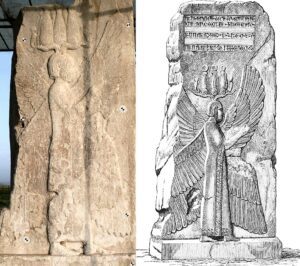

Cyrus the Great – By Wright, John Henry, 1852-1908Photograph: Pentocelo – This file has been extracted from another file: Pasargades winged man.jpgThis file has been extracted from another file: Pasagardae relief with inscription.jpg, GFDL, Link
“There was considerable intrigue in the succession from Cyrus to Darius. Cyrus the Great is killed in battle and is eventually succeeded by his cousin, Darius the Great. Daniel was so valued that he was given one of the three top positions in the Persian government over the satraps or province governors and chiefs. His two counterparts did not like this foreigner having such influence and so conspired against him, the pretext for the story of Daniel in the Lion’s Den.”[8]
“Daniel was able to escape from the den without a scratch; Darius was so pleased Daniel survived that he threw his two counterparts into the lion’s den – they were not as fortunate.”
“Darius was so impressed with Daniel and the other Jews that he made Aramaic the official language of his kingdom. As far as we know, Daniel then lived out his days in Persia and died during the reign of Darius. He was so revered that Darius made a huge monument to him that is still present in the modern city of Susa in Iran (modern Persia).”
“After Daniel’s death, the Magi continued on without him but they remembered the stories Daniel had told them about a future Messiah who would come to rule over Israel.
“Son of Earth, did you know that the Magi are discussed by ancient historians outside the Bible?”
“No angel – I have not heard of this history. Actually, I thought the whole story about “Magi” was just a fictional product of some ancient story teller’s imagination!”
“You would be wrong to think that because they are extensively mentioned in secular history. Herodotus (484-420) is an ancient Greek historian who mentioned the Magi as being one of the six Median tribes who were able to interpret dreams. His stories concerning the Magi during the reign of Cyrus illustrate their political influence.
Historians believe the name “Magi” might have originated with the Sumerians who called their language “Emegir” overtime becoming “Magi.” Over time, the Sumerian influenced the religion of the Magi was replaced by Zoroastrianism.”
“Hungarian tradition also traces their origins to an ethnic group called the “Magyar” which is a term derived from “Magi.” It is likely the Hungarians are the modern descendants of the ancient Magi.”
The Christmas Magi
“So what does this have to do with the Christmas Magi?”
“The Magi – like most civilizations of the time – were intensely interested in the stars and planets. In the ancient world, there was no smog, no light pollution, and few cities so the wondrous beauty of the night sky could be appreciated nearly everywhere. The Magi made careful observations of the night sky, year after year – generation after generation – keeping meticulous records which could be consulted if anything unusual was spotted.”
“Again, very interesting, but what does all of this have to do with the Magi?”
“Again the impatience! As you remember from history, the Persians were eventually conquered by Alexander the Great at the Battle of Gaugamela in 331 BC which was fought near the present-day city of Mosul in Iraq. It was a decisive victory and led to the fall of the Persian Empire; furthermore, the Alexander the Great also conquered much of Israel on his way to Persia in the late 330’s. Israel became another country owned by the ancient Greeks.
After Alexander’s death in 323 BC, the Greek kingdom was split apart by a series of wars known as the Wars of the Diadochi[9] fought between 322 and 275 BC. This was a series of wars fought among Alexander the Great’s generals to decide which general would get to rule what land.
“Judea was contested between the Ptolemaic Kingdom in Egypt and the Seleucid Empire based in Syria and Mesopotamia. Seleucus[11] was an infantry general under Alexander, and established the Seleucid Empire over much of the territory of the Near East and eventually the entire eastern part of Alexander’s Empire. Seleucid Emperor Antiochus III The Great’s (222-187 BC) victory over the Ptolemaic army in the Battle of Panium[10] in 200 BC brought Judea under Seleucid control. This battle was a decisive victory for the Seleucids as they annihilated the Ptolemaic army. The Ptolemaic kingdom never recovered from this loss and ceased to be an independent power.
Josephus portrays Antiochus III as friendly toward the Jews of Jerusalem which is in contrast to his son, Antiochus IV. Antiochus III lowered taxes and let the Jews live “according to the law of their forefathers.”
“Antiochus IV Epiphanes was one of the most ruthless rulers, reigning from 175 to 164 B.C. Antiochus tried to extend his empire into Egypt but was repulsed and forced to withdraw.[12] He then angrily returned to Jerusalem and sided with the Hellenized Jews to outlaw the Jewish religious rights and traditions, and by ordering the worship of Zeus as the supreme god.[13]
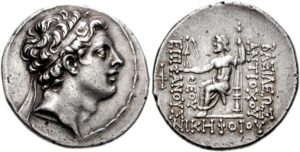

Antiochus IV Epiphanes – By Classical Numismatic Group, Inc. http://www.cngcoins.com, CC BY-SA 3.0, Link
This was intolerable to the religious Jewish population and they refused. Antiochus then sent an army to enforce this decree. The Jews continued to resist and the city of Jerusalem was destroyed, many were slaughtered, and a military Greek citadel called the Acra[14] was established. The Greeks under the Seleucid Empire tried to force the Jewish inhabitants to abandon the worship of God and instead worship Greek gods. This led to considerable conflict as noted in 2 Maccabees,
Not long after this the king sent an Athenian senator to force the Jews to abandon the customs of their ancestors and live no longer by the laws of God; also to profane the temple in Jerusalem and dedicate it to Olympian Zeus, and that on Mount Gerizim to Zeus the Hospitable, as the inhabitants of the place requested…They also brought into the temple things that were forbidden, so that the altar was covered with abominable offerings prohibited by the laws. A man could not keep the Sabbath or celebrate the traditional feasts, nor even admit that he was a Jew. At the suggestion of the citizens of Ptolemais, a decree was issued ordering the neighboring Greek cities to act in the same way against the Jews: oblige them to partake of the sacrifices, and put to death those who would not consent to adopt the customs of the Greeks. It was obvious, therefore, that disaster impended. Thus, two women who were arrested for having circumcised their children were publicly paraded about the city with their babies hanging at their breasts and then thrown down from the top of the city wall. Others, who had assembled in nearby caves to observe the Sabbath in secret, were betrayed to Philip and all burned to death.[15]
“It sounds like another example of an oppressed people being overcome by a superior force – nothing unusual here. Throughout the world’s history, there have always been situations where a militarily inferior population was overcome by a superior one – just look at the Native American’s in our own history!”
“Yes, that certainly is true, Son of Earth. But in God’s eyes, the stakes could not have been higher. If the Jews had been killed off, or if they had all become assimilated into Greek culture, the Messiah would have had a much more difficult time popularizing his message. Christ came first for the Jews – if the Greeks had won, there might not have been any Jews left!”
“OK – so what happened, Angel?
“A rebellion happened. It all started with the actions of a single man; just one person can have a profound influence upon the world, Son of Earth. You can think of many such people in the history of your country – like George Washington or General McArthur. This particular person was a rural Jewish priest named Mattathias the Hasmonean from Modlin – a small town in what is now called the West Bank – refused to worship the Greek gods. Apparently, another individual stepped forward to offer a sacrifice to a Greek idol in Mattathias’ place; this resulted in a fight in which the Hellenistic Jew was killed by Mattathias. He and his five sons fled to the wilderness of Judah.
“Mattathias then died a year later, probably overcome by the rigors of living in the desert, and in 166 BC, his son Judah Maccabee led an army of Jewish dissidents to victory over the Seleucid dynasty in a kind of guerrilla warfare. The Maccabees destroyed pagan altars in the villages, circumcised boys, and forced many Jews into fighting the Greeks.
“After winning the war against the Seleucid army, the Maccabees then ritually cleansed the Temple and re-established traditional Jewish worship there, and installed Jonathan Maccabee as high priest. The situation drastically worsened when Antiochus Epiphanes decided to quell the revolt but then died, whereupon his general – Lysias – agreed to a political compromise that restored religious freedom. The Jewish holiday of Hanukkah celebrates this victory.[16].
“Their victory was shortlived, however. After some further intrigue, the Seleucids sent Bacchides to Judea with an army to counter Judah Maccabees. Judah did not feel like he would be victorious against the much larger army and he retreated in order to engage in guerilla tactics. The Seleucid army had to withdraw to quell another rebellion, and Judas took the opportunity to re-capture Jerusalem. Another army under Nicanor was dispatched by the Seleucids to Judea. This time, the battle of Adesa ensued, and the Seleucid army was soundly defeated.
“The Seleucids sought revenge and sent their general Bacchides back again this time with an army of 20,000. The Maccabees were defeated and Judah Maccabees was killed in the battle of Elasa. This defeat challenged the Hasmoneans to greater courage and after several more battles they eventually won their independence in 140 BC.
Hasmonean Dynasty
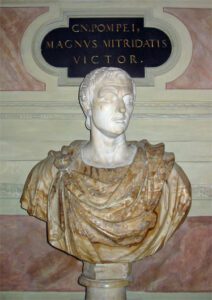

Pompey the Great – By The original uploader was JW1805 at English Wikipedia. – Transferred from en.wikipedia to Commons by Leoboudv using CommonsHelper., CC BY-SA 2.5, Link
“The Hasmonean dynasty lasted for 103 years. Between 140 and 116 BC, the dynasty ruled semi-autonomously from the Seleucids in the region of Judea and was recognized as an independent Jewish state by the Roman Senate in 139 BC. The Seleucid Empire was disintegrating after 110 BC and the Hasmonean dynasty became fully independent and expanded into the neighboring regions of Samaria, Galilee, Iturea, Perea, and Idumea.
The dynasty continued until 63 BC when Judea was invaded by Rome and conquered by Pompey the Great. It was then broken up and became a Roman client state. Civil war then ensued in Rome between Pompey the Great and Julius Caesar. Pompey lost the war in the Battle of Pharsalus and fled to Egypt where he was assassinated. Julius Caesar was assassinated four years later in 44 BC resulting in the Liberators’ Civil War. This civil war was fought to avenge Julius Caesar’s death and went on for several years.
There was a brief resurgence of the Hasmonean dynasty backed by the Parthian Empire. This short independence was then crushed by the Romans under Mark Antony and Octavian with the installation of Herod the Great (an Idumean or from “Edom”) as king of Judea in 37 BC.
Mark Antony and Octavian then had a civil war with each other which was settled at the Battle of Actium in 31 BC. This was a naval battle in which Mark Antony and Cleopatra of Egypt fought against Octavian. Octavian had a decisive victory while Mark Antony and Cleopatra would retreat to Egypt where they would both commit suicide.
Octavian – the winner of the civil war – would then consolidate his power over Rome and adopted the title of Princeps (“first citizen”). In 27 BC, he was awarded the title of Augustus (“revered”) by the Roman Senate and became known as Augustus Caesar.
In 6 AD, Rome joined together Judea, Samaria, and Idumea (biblical Edom) into the Roman province of Iudaea – effectively annexing Israel into the Roman Empire.
Herod the Great
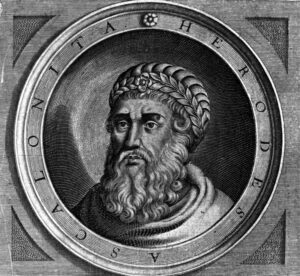

Herod the Great – By Unknown – https://thisblogisratedpgforpropheticguidance.files.wordpress.com/2013/11/herod.jpg, Public Domain, Link
Herod the Great was a ruthless despot who became hated by the Jewish nation. Herod’s father was Antipater the Idumaean, a high ranking official whose ancestry traces back to Edom. He became a high ranking official under the Hasmonean kings and eventually a client of the Roman general Pompey the Great when Pompey conquered Judah.
Antipater took sides with Julius Caesar and rescued him in Alexandria after Caesar defeated Pompey. Antipater was rewarded by Caesar by being made minister of Judea and given the right to collect taxes. Antipater made his two sons government officials in Judea: Phasaelus governor of Jerusalem, and Herod the governor of Galilee.
After the assassination of Julius Caesar in 44 BC, he sided with Gaius Cassius Longinus against Mark Antony. There was dissension among the religious Jews that Antipater was too close to the hated Romans, and he was eventually assassinated by being poisoned.
Herod the Great then took advantage of his position and was able to marry the Hasmonean princess Mariamme, endeared himself to Rom, and become king of Judea under Rome.
What is often lost in his history are the many good things Herod the Great did for the Jewish nation. He was responsible for the construction of the Temple Mount, a portion still in existence as the Western Wall. Herod constructed the harbor at Caesarea, several fortresses at Masada, Herodium, Alexandrium, Hyrcania, and Machaerus in which he and his family might take refuge in times in insurrection. He employed 1000 priests as masons and carpenters for the Temple construction and developed water supplies for Jerusalem.
Interestingly, he was also a businessman; he and Cleopatra owned a monopoly on the extraction of asphalt from the Dead Sea which was used in shipbuilding. He also leased copper mines on Cyprus from the Roman emperor to produce copper used in the manufacture of bronze.
In order to fund all these building projects, Herod used a Hasmonean taxation system that heavily taxed the Judean people.
Herod could also be a despotic ruler and frequently inflamed the religious population. He introduced foreign forms of entertainment and erected a gold eagle at the entrance of the Temple which was considered blasphemous. Herod became paranoid believing many in his family were trying to replace him. He eventually killed three of the sons from his ten wives. When the brother of his favorite wife, Mariamne, caused him to be suspicious of his loyalty, he invited him to a swimming party and had his men drown him. Herod also ordered the death of Mariamme’s grandfather and – finally, suspecting Mariamme herself of disloyalty, he had her done away with.
The two major Jewish sects of the day – the Pharisees and the Sadducees, both showed opposition to Herod for different reasons. The Pharisees were unhappy because Herod ignored many of their wishes with respect to the Temple construction, while the Sadducees opposed Herod because he replaced their high priests with outsides from Babylon and Alexandria.
This lays some of the groundwork for our ongoing story.
Judea is ruled by a despotic, murderous ruler with an Edomite background, who works for the hated Roman government. The country is on edge waiting for the birth of a Messiah who they hope will extricate them from Roman rule. The Magi once headed by the Prophet Daniel and given instructions regarding the time of the Messiah’s birth sees something in the heavens and starts a dangerous trip of hundreds of miles with valuable gifts including gold.
Returning to the Magi
“What is important to remember as we come back to the Christmas story is the influence of Parthia over Judea; the Roman Empire was in an unsteady peace with the Parthian Empire, and was deeply suspicious the Parthians might want to start peripheral wars at its borders. Therefore, there was great suspicion when the Magi – who were after all from Parthia – showed up uninvited. Remember too, son of Earth, the Parthian group representing the “Wise Men” was not just three “Kings” riding on camels, but a whole group of Magi with their supporting staff, guards, and attendants. The natural first concern was whether they representing a spy mission whose real goal was to determine the military strength of a traditional enemy.”
“That kind of presents a whole new aspect to an old story, doesn’t it?”
“Yes, Son of Earth; and remember this, the Magi were on a very dangerous mission. They recognized they could be considered spies and killed on the spot. They had to present themselves quickly to the local authorities and finish their mission. Their mission, of course, was to find this new King of Israel.”
“OK, Angel. I’ll bite. Just what was it that led the Magi to make this dangerous mission in the first place?”
“Excellent question, Son of Earth. These very important men left their comfortable existence and traveled hundreds of miles through dangerous territory – they had to have a good reason. Remember, the Christmas Magi were about 14 generations removed from those originally exposed to the teachings of Daniel – but they were a meticulous group who took great care to record every unusual astronomical event. These records were kept for many generations and were frequently consulted if anything unusual occurred. It was during the summer of 3 BC that something unusual happened in the skies which caused the Magi to take notice, and eventually to start their journey of exploration to Jerusalem.”
“What was this unusual finding that led them on this trip?”
“About 575 years before the Magi left on their hazardous trip, the angel Gabriel – the very same angel who would come to Mary and announce she would be the mother of Jesus – told the prophet Daniel – their leader – detailed information about events still far in the future. For our story, the most important event concerned a future King who would issue a decree giving the Jewish people permission to leave captivity and rebuild the Jewish Temple. Daniel was overjoyed to hear that his people would eventually be freed from captivity but was saddened to hear the rest of Gabriel’s message: Daniel was also told that 483 years after the decree freeing his people was issued, their promised Messiah would be killed.[18] [19] Daniel was not told the date of this decree but Daniel was told there would be special signs in the sky to announce the Messiah’s birth.”
“Just what ‘signs’ was Daniel told to look for?”
“Daniel was not told specifically of the signs to look for, but he was told something would happen in the heavens that would be spectacular – never seen before in history. He instructed the Magi they must keep detailed records of the stars so that when this future event occurred, they would know it was unique, special, and extremely important; maybe the Magi could do something that would keep the future Messiah from being killed.”
“Then what happened, Angel?”
“Daniel tragically never went back home to Jerusalem but died while in captivity and was buried in the city today known as Susa, Iran.[20] [21] The Magi continued their careful observations from Susa for centuries. Eventually, their descendants saw how in 444 BC,[22] King Artaxerxes Longimanus (the grandson of Darius the Great) gave the Jews permission to rebuild Jerusalem and the Magi knew the clock had started. They continued monitoring the sky with great diligence keeping detailed records of everything they saw.”
“So Angel, the Magi kept detailed records for an event most of them would never live to see?”
“Exactly right, Son of Earth. The importance of this future event was emphasized to them by Daniel who insisted they watch – and wait.”
“So, then what happened?”
“Centuries passed, son of Earth; reams of data were kept by the Magi who noted many strange but not extraordinary things in the night sky. They noted, for example, how the planets, moon and the sun all traveled in the sky along a line called the ecliptic.[23] The planets are not precisely on the same orbital plane as each other and so some years the planets would come very close to each other in the night sky, but would pass over or under each other. Rarely, the moon – which is a much bigger object in the sky than any of the planets – would come between the earth and the planet and firefly block out its light; this is called an occultation. These were rare events, but not so unusual they might have importance with respect to the birth of the Messiah.”


The night sky at any time at any place on Earth can be seen through the use of free computer programs – Image by Boskampi from Pixabay
“OK, Angel. This is all very interesting and everything, and I suppose you are going to tell me what interesting thing in the sky they saw, but how can I verify all of this? I mean, these things happened many centuries – even millennia ago, I can I verify what you are telling me? How do I know you’re not just making this up, or just telling me stories?”
“Son of Earth, your suspicious nature is challenging. But, son of Earth, you can validate everything I tell you – such as the ecliptic, exact positions of the sun, moon, planets, and stars on any modern home computer.[24] You see, Son of Earth, motions of celestial objects are very exactly known and through the laws of physics we can exactly position any planetary object with respect to the sun, moon, and stars going back many thousands of years, and from any position of the Earth and even from the Moon or Mars. You see, God has made a very orderly universe that is very predictable in many ways. The basic laws of planetary motion were originally discovered by Johannes Kepler based upon the detailed observational work of Tycho Brahe.”[25]
“So, I can get a piece of software and verify everything you are about to tell me?
“Absolutely correct, Son of Earth. Everything.”
“Kepler recognized the importance of his discovery of planetary motion; that he could determine the position of planets back thousands of years. Of course, in the 17th century, it was much more difficult to do all these calculations than it is today. Back then, the determination of planetary positions in the sky years ago required weeks of laborious calculations; today, you could do the same thing with only a few clicks of a computer mouse if you possess the right software.”
“So Angel, just what was Kepler so interested in that he would spend so much time making these calculations?”
“His purpose was to determine the cause – if possible – what the Star of Bethlehem was, and thereby know the time of Christ’s birth. He was faced with a dilemma, though. The task of determining the position of stars in the sky thousands of years ago was so laborious that Kepler could only do the calculations for a narrow window of time – perhaps for only a few years. So he tried to determine the best time to look.”
“Angel, I would think the answer would be obvious you would look at about 0 AD!”
“Son of Earth, your scientific knowledge is wanting; there is no such year as 0 AD – the timeline goes from 1 BC to 1 AD.”
“Then, I would think you might start at 1 BC perhaps – or at least during those two years you mentioned.”
“Kepler wasn’t sure – but he knew a great clue; Jesus was born shortly before King Herod the Great died. If he could only determine when King Herod died, then he would know where to begin to look.”
“Sounds logical, Angel.”
The only problem was the scientific consensus as to when King Herod died was wrong. You see, it was thought that Herod died in 4 BC, so Kepler looked for stellar formations or unusual objects before them. He finally settled on a particular planetary formation in 7 BC when Jupiter and Saturn were close together in the constellation Pisces but was disappointed because there was nothing really outstanding he could find that would explain why the Magi would start their long, dangerous journey.”
“I guess that goes to prove the whole Star of Bethlehem thing is a hoax; a nice bedtime story for children that has no basis in fact. The fact that Kepler was forced to choose some otherwise minor star formation in 7 BC only speaks to his determination to find something – anything – that could be an explanation even though it was far-fetched. He was a religious man steeped in the religious thought of his time; we are in a different time thankfully not bound to such superstition.”
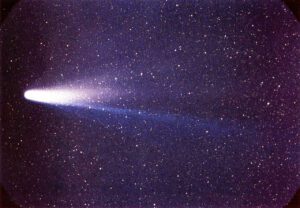

Halley’s Comet – By NASA/W. Liller – NSSDC’s Photo Gallery (NASA):http://nssdc.gsfc.nasa.gov/photo_gallery/photogallery-comets.htmlhttp://nssdc.gsfc.nasa.gov/image/planetary/comet/lspn_comet_halley1.jpg, Public Domain, Link
“Kepler even looked to other possibilities such as Halley’s comet which passed by the Earth in 12 BC,[26] and was recorded as being an important event by Chinese astronomers of the Han dynasty. During that year, Halley’s Comet passed very close to the earth and was likely a spectacular object in the night sky. Other possible candidates included a nova – or exploding star as Chinese records also record the appearance of a nova at about this time. However, it is difficult to understand how such an event could be associated with Christ.”
“Again, Angel, like I was saying, it is all just a fairy tale – a made-up myth by ancient people trying to magnify this Jesus – to make him look important to the common, ignorant people of that day.”
“Son of Earth,” continued the Angel ignoring Jeff’s incredulous outbursts, “in order to determine Christ’s birthdate, we need to know Herod’s death date. One of the more difficult tasks associated with this determination is not to get confused with the various King Herods ruling in that part of the world back then. For example, the Herod who beheaded John the Baptist and put his head on a platter was not the same Herod as King Herod who was the ruler at the time of Christ’s birth. But there are enough historical clues and obscure information to be able to make a reliable determination as to when Herod died.”
“So what does all of this have to do with anything?”
“It might surprise you, Son of Earth, to learn that much of the information concerning the birth of your Messiah comes from contemporary non-Christian sources. After the local Jewish rulers were defeated by the Romans Octavian and Mark Antony, Herod the Great was placed as ruler over the Jewish nation in 37 BC. Herod assumed the title of “King” but was always subject to Roman oversight and acted more like a governor.
“We learn much Jewish history from the Jewish historian Josephus. It turns out that Josephus descended from the Hasmonean High Priest Jonathan who ruled over Judea from 103 to 76 BC. Josephus was born and raised in Jerusalem, and became a Pharisee observing a very strict interpretation of the Jewish law against which Jesus spoke so bitterly.
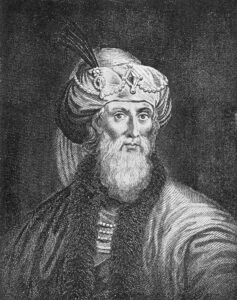

Josephus – By William Whiston (originally uploaded by The Man in Question on en.wikipedia.org) – https://sites.google.com/site/josephuspaneas/, Public Domain, Link
“Josephus enjoyed early fame when he was chosen to go to Rome to plead with Emperor Nero for the release of several Jewish priests. Apparently, he gets the help of Nero’s wife Poppaea and attains the Jewish Priests’ release.[27] [28] He went back to Jerusalem and was drafted into the Jewish military forces as commander of the Galilean soldiers fighting Rome in the Jewish wars of 66 – 71 AD.
“Unfortunately for Josephus and the Jerusalem Jews, in particular, the war did not go well for them. The Romans sent three legions, led by Vespasian and his son Titus, both of whom would become Roman Emperors. Josephus and his forces became trapped in a cave and were soon to be killed as they were overwhelmed by superior enemy forces. Fearing being killed or captured by the Romans – not known for their kindness – they developed a suicide pact whereby everybody drew lots and killed each other, one by one, counting every third person.
Somehow, Josephus was the only survivor and was captured by the Romans but was sent to prison rather than executed. In 69 AD, Josephus was released from prison on condition he would serve his Roman captors by being an interpreter for Titus (as Josephus had learned Latin while in Rome), and as a negotiator with the Jewish garrisons trapped in Jerusalem.
Eventually, Jerusalem was captured, 40,000 Jewish fighters were slaughtered, and 1200 women and children were sold into slavery. Josephus was considered by the Jews to be a traitor to Israel and his subsequent historical writings were not popularized for many hundreds of years.
“Then, in 71 AD, Josephus was rewarded for his loyalty to Rome and was given Roman citizenship, and eventually given accommodations in conquered Judea along with a small pension (because he could never again work among the Jews who would kill him on sight). It was during this forced retirement that Josephus wrote his two greatest works, The Jewish War in 75 AD, and Antiquities of the Jews in 94 AD. These works give a historical account of the Jewish nation for a Roman reader, as well as provide valuable insight into the first century Jewish nation – as well as a history of early Christianity.”
“Why are you telling me all of this, Angel – I mean it’s interesting but so what?”


The Andromeda Galaxy is composed of billions of stars, and there are about one hundred billion stars in our galaxy.
“It is pertinent to our discussion because Kepler used the death of Herod date provided by Josephus to make his calculations regarding Christ’s death. But here’s the interesting thing; a recent study of the earliest Josephus manuscripts held by the British Museum in London has revealed the real date of Herod’s death. Research has revealed that an error made in 1544 by a typesetter of the manuscript of Josephus’ Antiquities erroneously placed Herod’s death date in 4 BC. Every single existing manuscript of Antiquities printed before 1544 supports the real date as being 1 BC – and not 4 BC. Additionally, modern scholarship indicates Herod the Great’s reign ended early in 1 BC[29] [30] [31] supporting the date from Josephus’ earlier pre-1544 manuscripts.
This new knowledge allows us to look for a potential Star of Bethlehem candidate in the years 3-2 BC rather than prior to 4 BC. Then, with modern computers, we are able to quickly determine the position of the stars and planets without the laborious by-hand calculations Kepler used.”
“OK, Angel – just what have astronomers found out about the night sky in 3-2 BC that could possibly be of any interest as the Star of Bethlehem?”
“There are many interesting clues as to the cause of the Star. First, Son of Earth, I will tell you about a paradox – something that few investigators of the Star have considered until recently.”
“Just what is this ‘paradox’ Angel?”
The Christmas Star Paradox
“The paradox is this: The Star must have held great significance to some observers such as the Magi. They formed a group to travel from their country through hundreds of miles of dangerous territory carrying very valuable gifts (such as gold) to a foreign country where they might be considered spies. This was undoubtedly a very expensive trip for them to undertake not to mention very dangerous as well.
The paradox is that nobody in Israel had any inkling of a special celestial event! This means the Star could not have been a bright nova (or new star), or a brilliant comet or meteor as many have supposed. These objects would have provoked considerable fear in the population of a “bad omen” and would have provoked intense curiosity.
However, King Herod – and his counselors – would have been aware of such an occurrence. That is the paradox.”
“So, there is a little bit of a historical riddle involved with this Star of Bethlehem! Now you’ve started to get me interested, Angel.”
“It is good you are interested, Son of Earth, because the solution to this riddle will tie together many events in history that most have long forgotten, but which have been scrupulously investigated by historians and validated as best can be for things which occurred so long ago. Until very recently with the invention of the computer and the ability to calculate the position of stars and planets”
“OK Angel, go on.”
“The Bible indicates that King Herod was ‘disturbed’[32] when he heard from the Magi about some Jewish King being born. Of course, that is understandable since Herod would be personally threatened by such a new King. The Jews were a restive bunch, always protesting, demanding new privileges, and refusing to bow down to Caesar – like all others were forced to do.”
“Yea, old Herod was bloodthirsty; he had his son, Antipater, killed and didn’t Herod kill all the children in Bethlehem trying to kill Jesus?”
“Yes – but you are getting ahead of our story. You see, Son of Earth, not only was Herod deeply disturbed about the possibility of a Jewish King being born, this fear was shared throughout the then known world. Suetonius was an ancient Roman historian who recorded events in that time of world history. He had access to documents withheld from the general public because he was the personal secretary of Emperor Hadrian. Using these documents, he was able to write an authoritative, unequaled history of emperors and their personal habits and foibles.
Suetonius records that the Romans were concerned that a Jewish national leader might arise. He records in De Vita Caesarium: Divus Vespasian that “[t]there had spread over all the Orient an old and established belief that it was fated at that time for men coming from Judea to rule the world.”[33] Eusebius – one of the ante-Nicene Church Fathers reports that Vespasian was so concerned about the possible Jewish King that he attempted to exterminate the entire Davidic line from which the Messiah would arise.[34]
“So, the Romans were worried this might be a real person – a real King?”
“Yes; the Romans were in one sense a very religious people believing in an entire pantheon of gods who held control over their lives. They were pantheistic and believed in the possibility of a Jewish god and future Jewish king – they just didn’t believe in monotheism or that the Jewish god was superseded their gods. But that’s not all.”
“What else, Angel?”
“The Jews were also looking for a Messiah – a King who would lead them out of bondage to the hated Romans. It is one of the greatest tragedies in history that the Jews were looking for a Messianic General to conquer the Romans rather than the suffering servant so clearly expressed in Isaiah 53 and Psalms 22; they missed the first appearance of the Messiah. Pharisees in Christ’s day were looking for the Messiah as reported in John 1:14-27. Even the Samaritan woman at the well told Jesus, “I know that the Messiah (called Christ) is coming in John 4:25.”
“But Angel, the Jews were always looking for their Messiah, weren’t they? Why would this time be any different?”
“As we have discussed elsewhere, Son of Earth, what you call the Old Testament had predicted the exact date to the day of Christ’s triumphant entry into Jerusalem only a few days before his death. Of course, the Jewish elders knew of this prediction to a time we now know as 33 AD. Since they knew the time of his death, they knew he had to be coming soon in 2 BC.”
“Well, I guess that makes sense, Angel. But how do we know Christ was born in 2 BC?”
“We are getting to that soon, Son of Earth.”
“OK, go on Angel.”
“So you see, many were ‘disturbed’ about what the Magi were saying – that a new King had been born. The Romans because of a potential ruler who would lead a Jewish army against them, the Jewish citizens because there might be hope to escape Roman bondage and the Jewish elders who might receive additional power and respect with a Jewish King.”
“So poor old Herod must have been beside himself with anxiety and fear; he was always worried about being deposed.”
“Exactly right, Son of Earth. Herod was, of course, unfamiliar with Jewish Scriptures and the Magi had to tell him that the new King would be born in Bethlehem,[35] and that the new King would become the ruler of Israel.”
“All right, Angel, I’m sure you think you know what the skies looked like over Jerusalem in 3-2 BC – but how can I check up on you; I mean, no offense, but how do I know you’re accurate? I’m pretty sure you wouldn’t purposefully lie to me, but maybe you’re mistaken. I mean, there are so many variables to take into consideration after all; one slight miscalculation and the whole thing falls apart.”


Jupiter – By NASA, ESA, and A. Simon (NASA Goddard), edited by PlanetUser – https://www.nasa.gov/feature/goddard/2019/hubble-new-portrait-of-jupiter, Public Domain, Link
“If you are so inspired to check on what I am about to tell you, you can buy a program called “Starry Night”[36] or another program called “Stellarium” which is free to get. These programs can illustrate the sky overhead for anyplace on the planet throughout history. The movement of astronomical objects in the night sky is not random; it is very mathematical and can be determined with great precision. That is what Kepler and other astronomers were able to show four centuries ago.”
“All right, Angel. Go on with your story.”
“You are of course familiar with the planets?”
“Why don’t you just review them for me – just in case I might have forgotten something?”
“There are today eight planets in the solar system – there used to be nine but Pluto has been delegated a dwarf planet. For our story, the only planets which were known to the ancients were – in order from their distance from the Sun: Mercury, Venus, Earth, Mars, Jupiter, and Saturn. Jupiter is a giant planet whose orbit is much further out from the Sun than Earth’s orbit, and the planet takes about twelve years to orbit the Sun. Great significance was given to Jupiter and anything usual would have been given great importance.”
“Ok, Angel, so I suppose something unusual happened with Jupiter – right?”
“Do not be so impatient, Son of Earth,” the Angel was clearly a little annoyed with Jeff’s impertinence. The Angel was trying to explain one of the most important astronomical events in human history. “Yes, Son of Earth, something very unusual happened with Jupiter in 3 BC. But I need to educate you about astronomy because your knowledge is so limited.”
Jeff was somewhat taken aback from Angel’s sharp rebuke. But upon reflection, Jeff had to admit his knowledge of astronomy was marginal at best. He spent most of his time in big cities where the night sky is barely visible, so why become interested in what you cannot see.
“The Magi knew that the King would arise from the tribe of Judah[37] [38] [39] from their knowledge of the Jewish Scriptures brought to Persia by the Jews who were brought there by the Babylonians. Remember Daniel – the ancient Jewish prophet – was made chief of the Magi and taught them about his Jewish beliefs. Judah is portrayed as a young lion in the Jewish Scriptures so the Magi would be looking for something having to do with a lion. Son of Earth – do you remember the Constellations?
“Well, I remember the Big Dipper and I guess there is a Little Dipper too – but that’s about it.” Jeff was embarrassed to admit his ignorance, but he was being asked direct questions and couldn’t fake an answer.
“As you may remember, Son of Earth, there are twelve constellations called the Zodiac along the ecliptic. The ecliptic is an imaginary line across the sky along which the planets seem to move. Because the Earth is tilted on its axis by 23.5 degrees, the ecliptic is also tilted with respect to the horizon; the amount of tilt depends on how far you are from the equator.”
“OK Angel. Look, I’m getting a little bored with this astronomy stuff. Let’s hurry it along, OK?”
“I can see by your slowness to comprehend that I will need to break up this discussion into two nights; your level of understanding is so marginal.”
“Whatever.”
“So the Messiah came from the Tribe of Judah associated with a lion; the symbol of the tribe is a lion; you can see that a lion is on their emblem. There is a constellation in the sky called Leo – the Lion – so the Magi were watching this area very closely as well. Leo’s brightest star – Regulus – is also the brightest star in the sky that lies along the ecliptic. It was in 3 BC that something big – very big – happened with Jupiter the King planet and Regulus the King star in Leo – the constellation associated with the Messiah’s tribe of Judah – that caused the Magi to leave for Jerusalem.”
“What was that?” Now the Angel had Jeff’s attention. Gradually, the Angel had weaved a story about the ancient Magi, the prophet Daniel in the Old Testament, the Messiah, Jupiter, Regulus, and the Star of Bethlehem. But he would have to wait.
“Son of Earth; I have much, much to tell you – just about the Star and the history of Israel and the Roman Empire concerning this Star. I certainly cannot tell you everything in one night; indeed, you may need one or two more visits just on this topic alone. You will have to wait until another night to hear more.”
And with that announcement, the Angel and his brilliance slowly diminished until Jeff recognized he was again in his room.
He could remember everything – every word and question the Angel asked him. Just like all the other dreams, it was very different. Usually, Jeff couldn’t remember a dream five minutes after he woke up, but these were different. Jeff looked at his watch: 3 AM. There was still a lot of time for more – why did the Angel have to quit? How could he go back to sleep again. He went over to his computer and tried to investigate everything the Angel had told him; there was so much.
Jeff gradually went back to sleep, and when he woke up again a few hours later, the Angelic dream seemed more distant – more unreal. Surely, there must be a natural explanation for everything – and he had not even heard everything yet. The Angel was telling his story like it was actual history; like it actually happened. He remembered believing the Star of Bethlehem was just a myth because there was no natural explanation.
“So what,” Jeff thought. Weird things happen in the sky all the time; surely, it was a coincidence that something weird happened at the same time a guy was born in Israel who proclaimed himself King. And just what happened to this great King supposedly announce by the stars and planets? He was killed – that’s what. And on top of all this, how do we know any of this stuff happened at all? Sure, there were some historical figures who are well document – like Julius Caesar and Nero – but how do we know this Jesus guy even really lived at all, much less was the Son of God?
“If you ask me, Jeff said to himself, “It’s all a hoax – a great big hoax go get money and power from the ignorant masses. We live in modern times now; who can believe this stuff.”
It’s all just a coincidence, it’s all “much ado about nothing” to quote Shakespeare.[40] He’ll have to remember to challenge the Angel with these new insights he had after time allowed some considered reflection upon the night’s occurrence.
“What actually did happen tonight,” Jeff thought as he sat down in bed. “I mean, sure, all this stuff I hear in my head at night while asleep is probably just a dream – a very bad dream at that! But, it all seems too real, and I somehow remember everything. I guess I could just go and look things up – but heck, why should I. I’ve got a good life and I don’t want anything rocking the boat!”
With that dismissive thought, Jeff put his dreams and fears behind him and planned for the next day.
“It’s good to plan for the future. Just like that guy – what was that guy’s name?
Jeff was at a motivational meeting paid for by his stock brokerage house. They were nice enough there but they didn’t really tell him anything he didn’t already know. To get anything of value accomplished, but just can’t hope; you have to plan. He was taught how to keep a daily diary of how well he was proceeding toward his goals, then a weekly, monthly, six-monthly and yearly summary of his goal-accomplishing achievements. He was taught how to visualize the future; if you can dream it, you can live it – that was the motto of this meeting. Jeff had big dreams – he was headed for the top.
It’s hard to plan for everything.
References
[1]
Frankincense is an aromatic resin used in perfumes and incense derived from trees; interestingly, the English word is derived from the Old Frence “franc encens” meaning high quality incense (Oxford English Dictionary). In the Jewish Temple, frankincense was one of the ingredients of an incense that was burned before the temple.
[2]
Myrrh is also an aromatic resin that is used throughout Scripture. In medicine, it can be used as an anesthetic and was mixed with vinegar by the Roman soldiers and offered to Christ while on the cross (he refused).
[3] https://en.wikipedia.org/wiki/Darius_I
[4]
Zondervan Pictorial Encyclopedia of the Bible. 4:31-34
[5] http://www.iranicaonline.org/articles/dagestan
[6] https://books.google.nl/books?id=riW0kKzat2sC&pg=PA409&lpg=PA409&dq=achaemenid+empire+abkhazia&source=bl&ots=3DhquWsEHk&sig=DyVTtj6kmXbh-nRenyOpbAnLisM&hl=nl&sa=X&ei=wPOgVNqFB8y8UYKmgLAL&ved=0CFAQ6AEwBw#v=onepage&q=achaemenid empire abkhazia&f=false
[7] https://en.wikipedia.org/wiki/Battle_of_Marathon
[8] Daniel 8
[9] https://en.wikipedia.org/wiki/Wars_of_the_Diadochi
[10] https://en.wikipedia.org/wiki/Battle_of_Panium
[11] https://en.wikipedia.org/wiki/Seleucus_I_Nicator
[12] Polybius 29.27, Livy 45:12.4ff (This provides an interesting story. In 168, Antiochus led an attack against Egypt. Before reaching Alexandria, his path was blocked by a single old Roman ambassador named Gaius Popillius Laenas who delivered a message from the Roman Senate directing Antiochus to withdraw his armies from Egypt or be considered in rebellion against the Roman Empire. Antiochus initially said he would have to consider his proposal; then, the ambassador drew a circular line in the sand around Antiochus saying, “Before you cross this circle I want you to give me a reply for the Roman Senate” – implying that Rome would declare war if the King stepped out of the circle without committing to leave Egypt immediately. Weighing his options, Antiochus decided to withdraw; only then did Popillius agree to shake hands with him.)
[13] 2 Maccabees 6:1-12
[14] https://en.wikipedia.org/wiki/Acra_(fortress)
(The Acra was a fortressed under the southern wall of the Temple Mount. The term “acra” referred to a fortified structure
[15] 2 Maccabees 6:1-11
[16] The Jewish festival of Hanukkah celebrates the re-dedication of the Temple following Judah Maccabees’ victory over the Seleucids. According to rabbinical tradition, the victorious Maccabees could only find a small amount of oil that had remained uncontaminated by virtue of a seal, and although it only contained enough oil to keep the Menorah lit for one day, it miraculously lasted for eight days by which time further oil could be procured.
[17] Mark Antony was a supporter of Julius Caesar, serving as one of his generals during the conquest of Gaul (modern France). Antony was appointed administrator of Italy while Caesar eliminated political opponents in Greece, North Africa, and Spain. Caesar was named dictator perpetuo (“dictator in perpetuity”) by the Roman Senate in 44 BC. Apparently, Caesar received the new honors while sitting in the Temple of Venus Genetrix rather than rising to meet them. This led to rumors that he was considering abolishing the Republic and assuming a dictatorship. These rumors gained credence as Caesar continually strove for more power to govern from the Senate, which was still the authority.
Several senators calling themselves the Liberators, began a conspiracy to murder Julius Caesar to keep him from becoming a dictator. The conspirators decided to murder Caesar while in the Senate, since only Senators were admitted (there would be no protection), and the conspirators could hide the daggers beneath their togas. Caesar had been preparing to invade the Parthian Empire leaving at the end of March, 44 BC; this forced a timetable upon the conspirators who decided upon the “ides of March” or March 15th.
There were over forty conspirators in the murder of Julius Caesar. The plot started with Lucius Tillius Cimber presenting Caesar with a petition to recall his exiled brother. The other conspirators gathered around to offer their support. Both Plutarch and Suetonius say Caesar waved them away, but Cimber grabbed Caesar’s shoulders and pulled down Caesar’s tunic. At the same time, Servilius Casca produced his dagger and made a glancing thrust at Caesar’s neck. Caesar then turned around quickly and caught Casca by the hand. Casca, frightened, called out “Help brother” in Greek. Within seconds, the entire group, including Brutus, was striking out at Caesar. He attempted to get away but blinded by blood, he tripped and fell, while the other men continued stabbing him as he lay defenseless on the lower steps of the palace. Maybe about 60 or more men participated in the assassination, with Caesar being stabbed 23 times. A physician performed an autopsy on Caesar and established only one wound – the second one to his chest – was lethal. The autopsy report – the earliest known post-mortem examination in history – describes the cause of death was mostly attributable to blood loss from multiple stab wounds.
The conspirators then fled the building while Brutus and his companions marched to the Capitol while crying out to their city, “People of Rome, we are once again free!” They were met with silence, and most of the citizens of Rome had locked themselves inside their houses as soon as the rumor of the assassination spread. Apparently, Caesar lay there lifeless for some time, and finally, three common slaves put him on a litter and carried him home.
The Roman lower classes – with whom Caesar had been popular – were outraged that a small group of aristocrats had killed Caesar,. Mark Antony – who had been drifting away from Caesar, tried to capitalize on the grief of the Roman mob and direct their anger against the Optimates or traditional Senators who wished to limit the power of Caesar. But, to Antony’s surprise, Caesar had named his grandnephew Octavius his sole heir, giving him the immensely important name Caesar as well as making him one of the wealthiest citizens in the Republic. Octavius became Gaius Julius Caesar Octavianus – or Octavian and inherited the loyalty of much of the Roman populace. Octavian, aged only 18 at the time of Caesar’s death, proved to be a consummate politician and while Antony dealt with Brutus in the first round of new civil wars, Octavian consolidated his position.
Brutus and Cassius were massing an enormous army in Greece, and Antony needed money for soldiers. Antony used the cash from Caesar’s war chest and formed an alliance with Octavian and Caesar’s Master of the Horse Lepidus. The group formally deified Julius Caesar as Divus Iulius in 42 BC, and Octavian became Divi filius (“Son of the Divine”). The group also brought back proscription, whereby they could murder a large number of their opponents in order to fund its legions in a second civil war against Brutus and Cassius. Octavian and Antony defeated them at the Battle of Philippi.
Afterwards, Antony married Caesar’s lover, Cleopatra and intended to use the wealth of Egypt to dominate Rome. A third civil war broke out between Octavian and Antony and Cleopatra; this resulted in the Battle of Actium and the defeat of Antony, the final ascendancy of Octavian – who became the first Roman emperor under the name Caesar Augustus.
Cleopatra was a member of the Ptolemaic dynasty (one of the four groups who ruled after the death of Alexander the Great). The Ptolemies, throughout their dynasty, spoke Greek and refused to speak Egyptian. By contrast, Cleopatra did learn to speak Egyptian and represented herself as the reincarnation of the Egyptian goddess, Isis.
Cleopatra originally ruled jointly with her father, Ptolemy XII Auletes, and later with her brothers Ptolemy XIII and Ptolemy XIV, whom she married as per Egyptian custom. Eventually, she became sole ruler of Egypt, and as pharaoh, she consummated a liaison with Julius Caesar that solidified her grip on the throne; this union produced a son, Caesarion, to co-rule with her.
After Caesar’s assassination in 44 BC, she aligned with Mark Antony in opposition to Octavian. With Antony, she had the twins Cleopatra Selene II and Alexander Helios, and another son Ptolemy Philadelphus (her marriage with her brothers produced no children). After losing the Battle of Actium to Octavian’s forces, Antony committed suicide and Cleopatra followed suit, according to tradition killing herself by means of a snake bite on August 12, 30 BC. She was briefly survived by her son Caesarion, who was declared pharaoh by his supporters but was soon killed by Octavian’s orders. Egypt then became a Roman province as it was formally annexed into the Roman Empire.
[18] http://www.aboutbibleprophecy.com/weeks.htm
[19] Daniel 9
[20] http://historicaliran.blogspot.com/2010/09/tomb-of-daniel.html
[21] http://thecompletepilgrim.com/tomb-daniel/
[22] http://www.biblereferenceguide.com/keywords/artaxerxes.html
[23] https://en.wikipedia.org/wiki/Ecliptic
[24] http://www.stellarium.org/
[25] Johannes Kepler (1571-1630) is one of the most important astronomers in history for discovering the laws of planetary motion. He was born in the Free Imperial City (a city that was self-ruled and only answerable to the Emperor, rather than in a territorial city or town that to a territorial authority such as a duke, count, etc.) of Weil der Stadt – now part of the Stuttgart region of the German state of Baden-Wurttemberg. Unfortunately, he lived in a family with emerging financial difficulties as his absent father worked as a mercenary soldier and was frequently absent from the family for prolonged periods of time. He was born prematurely and suffered through a sickly childhood; however, even though he was physically challenged, his mental capacity far surpassed his peers. History tells how young Kepler would frequently stay at his grandfather’s inn and would often impress passersby with his great mathematical ability.
Kepler was introduced to astronomy at a young age, and developed a fondness for the science in which he later pursued a career. At age six, he observed the Great Comet of 1577, writing that “he was taken by his mother to a high place to look at it.” At age nine, he also observed another astronomical event – a lunar eclipse in 1580, remembering that he was called outdoors to look at the event and that the moon “appeared quite red.” Unfortunately, as a child he would suffer the ravages of smallpox which nearly killed him, leaving him visually impaired and with crippled hands, limiting his ability in observational astronomy.
Kepler eventually went to the University of Tubingen where he was able to demonstrate his ability as a mathematician and even as an astrologer, casting horoscopes for fellow students. He learned both the classical Ptolemaic model of the solar system (earth-centered universe) as well as the new hotly debated Copernican system (sun-centered (rather than earth-centered) solar system); over time, he would come to correctly favor the Copernican model. Originally, he wanted to become a Lutheran minister, but was persuaded to assume a position as teacher of mathematics and astronomy at a Protestant school in Graz (later the University of Graz) at age 23.
Kepler’s first major work Mysterium Cosmographicum sought to explain the motion of the planets with respect to each other and the Sun. Kepler’s heliocentric model was developed to support his religious Protestant convictions that the Sun was analogous to the Father, the heavenly sphere containing the stars was analogous to the Son, while the space in between was analogous to the Holy Spirit. His first manuscript also contained an extensive chapter relating his vision of heliocentricism (Sun at the center of the solar system) with Biblical passages supporting his claims. With the encouragement of his science mentor, Michael Maestlin, Kepler received permission from the Tubingen University to publish his manuscript, pending removal of the Biblical references and simplification of the Copernican model. Mysterium was successfully published in 1596, and Kepler obtained several copies to send out to potential employers. Kepler’s rather effusive introduction and dedication to powerful patrons and benefactors helped him to widely distribute his manuscript and solidify his position as a qualified astronomer.
Kepler met Tycho Brahe in 1600 and worked at his observatory over several months while studying Brahe’s observations of the planet Mars were highly regarded as being very accurate and Kepler considered them important to substantiate his planetary motion theories presented in Mysterium. Kepler estimated it would take him at least two years doing computations work laboriously by hand in order to determine characteristics of planetary motion. Further complicating Kepler’s work was Brahe’s jealousy regarding his observational data. Brahe would only allow Kepler access to limited portions of his data thereby further limiting his progress. Kepler tried to negotiate greater access to Brahe’s data but relationships broke apart in a heated argument. However, both astronomers eventually recognized their need for each other and reconciled, reaching an agreement on permanent employment and salary. An excited Kepler quickly returned to Graz to collect his family and belongings and move to Prague.
Kepler found his situation in Graz had deteriorated considerably. Graz had become involved in the Catholic Counter-Reformation and Kepler – who refused to renounce his Lutheran beliefs and convert to Catholicism – was banished from the city. Kepler then returned hastily back to Prague and assumed an employed paid position working for Brahe. He even was granted a commission from the emperor to work on a new project that would replace the Prutenic Tables of Erasmus Reinhold – astronomic tables of data that were used to predict the position of astronomic objects. These observations were more for nationalistic reasons, made for Emperor Rudolph II to replace those of the Prussian Prutenic Tables. However, Kepler’s benefactor, Tycho Brahe, died unexpectedly on October 24, 1601 before Kepler’s work could be finished. While initially seen as a great set-back for Kepler, the death of Brahe would instead launch his career in a new direction.
Tycho Brahe was an extraordinarily important astronomer without whose help Kepler’s career would likely have disintegrated and his future fame extinguished. Brahe was an astronomer and alchemist who became wealthy as a paper manufacturing businessman. Brahe was able to build an astronomical research institute which he used to make detailed, very accurate observations of astronomical objects which he hoped would eventually substantiate the Copernican model of the solar system.
Brahe was the last of the naked-eye astronomical observers, making his detailed studies only a few years before Galileo invented the telescope in 1608 which would forever change observational astronomy.
Brahe’s career was solidified with his observations of a new star that appeared in the sky in 1572 in the constellation Cassiopeia. Brahe made extensive observations of this new object, and was able to demonstrate that the star had no relative movement with respect to other fixed stars over months of observational time. This observation was extremely important, because the lack of relative movement (or “parallax”) meant the object had to be very distant – much more distant than the moon. Indeed, we now know that the stellar object which was visible in the sky for about two years, was a supernova, about 7500 light-years away. Brahe noted that this observation also disproved the widely held belief promoted in ancient Greek times by Aristotle, that the heavens beyond the orbit of the moon were forever unchanging and unmoving. Brahe subsequently published his observations in a small book entitled, De Nova Stella thereby inventing the term “nova” for a new star. Additionally, this discovery was important for Brahe’s choice of astronomy as a career, and for our story. Parenthetically, Tycho’s discovery was the inspiration for Edgar Allen Poe’s work “Al Aaraaf,” and for Shakespeare’s line “star that’s westward from the pole” in Hamlet.
Brahe was also a rather emotional, perhaps irrational man, prone to fits of rage while possessing an uneven temperament. During one of these emotional moments, Brahe entered into an unadvised sword duel against a fellow Danish nobleman at night over the correctness of a mathematical formula. Neither man had the mathematical resources (or skill) to adequately determine which person was correct, so they resorted to a sword duel. Brahe apparently lost the challenge when he forfeited part of his nose and for the rest of his life wore a replacement nose, using a paste of glue to keep the metal nose attached. Some have suggested the nose was made from copper because when Brahe’s grave was opened in 1901, there was a green discoloration of copper noted on Brahe’s skull. However, very recently in November 2012, Danish and Czech researchers examined a sliver of discolored skull bone using modern chemistry and found the metal was bronze, not copper.
The cause of Brahe’s death – which was to be of such great fortune for Kepler – has also been a matter of considerable controversy for centuries. Apparently, Brahe had been ill for several days, and suddenly became acutely ill after attending a banquet in Prague on October 13, 1601. According to Kepler’s hand-written account, Brahe refused to leave the banquet to relieve himself because such a departure would have been considered an insult to his dinner guests. Brahe was no longer able to urinate after returning home and shortly became delirious and died eleven days later. Brahe became upset with himself for dying of such a self-inflicted malady and wrote his epitaph: “He lived like a sage, and died like a fool.” A contemporary physician suggested death due to a kidney stone (nephrolithiasis) but no stone was found at autopsy. Modern medical science now believes that most likely Brahe succumbed to renal failure and infection (septicemia) due to a ruptured bladder.
Brahe’s contribution to observational astronomy was the basis for the later success of his co-worker Kepler. Brahe’s observational positions of stars and planets were far more accurate than any of his contemporaries. In 1993, Rawlings noted that the Brahe Star Catalog, “achieved, on a mass scale, a precision far beyond that of earlier catalogs.” Brahe’s death resulted in an important opportunity for Kepler. Two days afterward, Kepler was appointed Brahe’s successor as an imperial mathematician with the responsibility to finish Brahe’s work; the next eleven years would represent the most important years of Kepler’s life. Additionally, while Catholicism was the official religion of Prague at the time, Kepler’s position in the imperial court allowed him to practice his Lutheran faith without hindrance. But far more important for our study of the Star of Bethlehem was Kepler’s development of mathematical formulations of planetary orbits using Brahe’s data. These formulas would enable the calculation of planetary positions relative to background stars back to the time of Christ’s birth.
Kepler’s determination of planetary positions started with his observations of the planet Mars while under the employ of Brahe. Initially, he applied the equant approach first proposed by Claudius Ptolemy in the second century and refuted by Copernicus. This model used an “equant” or theoretical point on a line through the Sun and the center of a circle, located opposite the Sun. The model was eventually fairly accurate in predicting planetary position to within 2 arc-minutes but at certain orbital positions was inaccurate up to 8 arc-minutes. However, the model was not sufficiently accurate and was rejected by Kepler. Kepler’s religious background obligated him to first consider circular planetary orbits as the circle was considered the most “perfect” geometric pattern for the orbits God created. Kepler’s genius emerged when he recognized the inability of circular orbits to precisely predict planetary positions and choosing to investigate the ellipse instead; this had apparently never been done previously by any other astronomer as they all insisted on a circular orbit. It would have been impossible for Kepler to determine a circular orbit could not deliver the predictive accuracy of planetary positions he required without the precise measurements of planetary positions – especially Mars – by Brahe.
By utilizing an elliptical orbit instead, Kepler was able to increase the accuracy of his model of planetary positions. It is difficult to underestimate the importance of this discovery for it allowed the precise determination of planetary position on any date in the future or in the past. Kepler took his observations one step further by developing one of his laws of planetary motion indicating that planets sweep out equal areas in equal times. He then concluded that all planets move in an elliptical orbit with the sun at one focus – this would become Kepler’s first law of planetary motion. The second law holds that in a given small time interval, the planet would sweep out a triangle (sector) with an area that is the same as any other time interval. Several years later, Kepler would publish his third law of planetary motion, that the square of planet’s orbital time is proportional to the cube of its mean distance.”
The significance of Kepler’s laws of planetary motion was not appreciated for some time. Indeed, some major figures in astronomy such as Rene Descartes and Galileo completely disregarded his work. This caused Kepler great consternation because he knew his laws were truly monumental discoveries that would revolutionize astronomy. They would show that the orbits of planets are mathematically predictable.
The first major test of Keplerian astronomy occurred shortly after his death with the transit of Mercury across the face of the Sun in 1631. Mercury – along with Venus – are inner planets that at times cross directly between the Earth and Sun. This turns out to be a fairly rare event, but could now be predicted using the mathematical discoveries of Kepler. It is remarkable that astronomers of that day were able to observe the tiny, dark disk of Mercury traveling over the brilliant surface of the Sun with their very primitive instruments. Kepler had been uncertain about Mercury’s movement because the planet is notoriously difficult to observe most times of the year (due to its proximity to the Sun) and its position was, therefore, less certain than the other planets. Nonetheless, the planet was dutifully observed to move across the face of the Sun on the day predicted by Kepler. This observation confirmed the entire system of mathematical astronomy uncovered by Kepler and confirmed the entire heliocentric model of the solar system. Remarkably, this was also the first time a Mercury transit had ever been observed.
In 1687, Isaac Newton derived Kepler’s laws of planetary motion utilizing mathematical derivations thereby further establishing the correctness of Kepler’s observations, the heliocentric model of the solar system, and the ability of mathematics to predict the exact position of planets (and even stars) into the distant past.
Since the 1960s, Kepler’s role in the development of modern science in general and of astronomy, in particular, has become more clear and has formed the basis what many consider his intellectual transformation from ancient to modern world views. His studies of astronomy were fundamental and moved astronomy from a purely intellectual pursuit to one involving observation and the scientific method. Additionally, Kepler was also important for his contributions to meteorology, theology, his literary and rhetorical methods, and even as a historian of science.
[26] https://en.wikipedia.org/wiki/Halley’s_Comet
[27] http://www.josephus.org/joschron.htm
[28]
http://wjudaism.library.utoronto.ca/index.php/wjudaism/article/view/22531
[29] http://www.ncregister.com/blog/jimmy-akin/jesus-birth-and-when-herod-the-great-really-died
[30] http://www.askelm.com/star/star010.htm
[31][31] It has only been recently that we have been able to determine the exact date of King Herod the Great’s death date with any degree of certainty. As we have previously pointed out, the precise determination of this death date is crucially important for the determination of Christ’s birth date. until fairly recently, most scholarship insisted that Herod’s death date was for BC as described in Josephus’s Antiquities printed after 1544. There has been so much written concerning King Herod’s death date being for BC that to place the state three years later places most of this early scholarship in question thereby perhaps explaining the resistance of most antiquities scholars to a 1 BC death date. However, recent scholarship coupled with astronomical observations allow us to establish the 1 BC death date with much greater certainty.
Eclipses are a powerful indicator to allow precise determination of historical events because eclipse dates can be determined with precision just as the exact position of stars and planets in the nighttime sky can also be determined with precision. Indeed, it is possible to calculate the exact onset of a lunar eclipse to within minutes of their actual occurrence thousands of years ago at any place on the Earth’s surface. Using this information, it is therefore possible to precisely determine the date of a historical event when its occurrence can be paired with an eclipse. Such a fortuitous pairing turns out to be possible with the death date of King Herod the Great. Josephus indicated that King Herod the Great died between the dates of a solar eclipse and Passover. Since we know the approximate date of King Herod’s death to be between five BC and one A.D., it is possible to go back in history and determine the dates of lunar eclipses that are visible in Palestine between these dates in relation to Passover.
Astronomers during the 20th century told theologians that were investigating the death date of King Herod the Great that there was a lunar eclipse observed during the evening of March 13, 4 BC that was visible in Palestine. Historians jumped on that eclipse date as being the one mentioned by Josephus since manuscripts of Josephus’s Antiquities published after 1544 suggested that Herod’s death date was also in 4 B.C., and since Passover by which time King Herod was buried occurred twenty-nine days later that year. Unfortunately, this narrative fails because there is simply not enough time between Herod’s purported death date and Passover for all of the historical events to have occurred. Additionally, as we shall see, a 4 BC death date does not align with other historical events that are known to have occurred just before Herod’s death date. Rather, as we shall soon see, another lunar eclipse on January 10 in 1 BC gives much more time until Passover for all of these events to have occurred. It should also be noted that there were no lunar eclipses between 4 BC and 1 BC. Additionally, the early church fathers have placed the birth of Jesus from 3 to 1 BC rather than earlier. But, in addition to testimony from the early church fathers, we also have new historical documentation which independently places Herod’s death in early 1 BC. Your 1st going to investigate the eyewitness account of Nicholas of Damascus whom Josephus quotes, and which proves that the eclipse of 4 BC simply cannot be the correct one.
The modern historian needs to categorize all of the events which occurred from the day of the lunar eclipse until when Herod died, and then add on the time that elapsed for his funeral and burial, and then count the period from Herod’s burial until Passover when we know that Herod’s son Archelaus was raining in Jerusalem. The first important historical event that can be tied to the correct lunar eclipse occurred when 2 prominent Jewish rabbis were burnt alive upon the command of Herod for tearing down a golden Roman eagle which he had erected over the Eastern gate of the temple. For the Jewish rabbis, this was an utmost sacrilege to the profound holiness of their temple. But it is important to our narrative because Josephus writes, “on that very night there was an eclipse of the moon.” (Josephus, Antiquities XVII–167). The morning after the eclipse, Josephus stated Herod’s illness became much worse. Apparently, he had been sick for several months and the people said that his illness became much worse after he killed these two beloved rabbis. Josephus then indicates that Herod’s physicians tried “one remedy after another” without success. It is certainly reasonable to assume that one could allow 2 or 3 days after the eclipse for Herod’s physical condition to deteriorate noticeably, and for at least 4 or 5 days for various remedies to be tried; therefore, the elapsed time for these events would reasonably occupy one week at a beer minimum.
After the failure of these various remedies, Herod’s physicians then recommended that he leave Jericho which was then his temporary residence, and retreat to the mineral baths at Callirrhoe. These baths were located on the Dead Sea which was approximately 25 miles southeast of Jericho. Herod heeded their advice since he was very ill and getting worse, and it would be reasonable to assume that at least a day elapsed for him to have been physically moved to these baths. He then began a period of treatment there using these mineral waters probably for at least 2 or 3 days to give them a chance to work. Unfortunately, these bands gave Herod no sign of improvement and he ordered his attendance to carry them back to Jericho.
Once back at his palace in Jericho, Herod realized he was dying and was becoming concerned about his legacy. He certainly recognized that the Jewish people hated him and Herod was afraid that there would be a celebration at the time of his death rather than the mourning he deeply desired. He, therefore, decided on a scheme that would have the whole nation of Israel in mourning at the time of his death. He decided to have many prominent Jewish leaders from all parts of his kingdom come to Jericho at which time they would all be placed in custody. Upon Herod’s death, he ordered that they would all be executed thereby guaranteeing that the entire Jewish nation would go into a state of mourning (of course, this morning would not be because of Herod’s death but it would be due to the execution of all the Jewish leaders). Messengers were sent out from Jericho to all parts of Israel bearing orders for the elders of the cities and villages to appear at Jericho upon pain of death for their refusal. Since the northern cities of Israel were approximately 130 miles away, a period of at least three days for the messengers to reach the elders, a day or two for the elders to prepare for this trip, and then another three days for the elders to reach Jericho would occupy at least a week. Josephus noted that these municipal elders and other Jewish dignitaries finally did arrive at Jericho and were immediately locked up in the hippodrome which was a racetrack area. In total, this gives a time interval of approximately 3 weeks from the eclipse.
Josephus then indicates that a letter came from Caesar Augustus in Rome giving Herod permission to execute his son Antipater. The king had him executed immediately and then Herod died five days later. (Antipater was Herod’s first born son and became heir to Herod’s throne. However, Herod became concerned Antipater was planning his murder and he was tried before the Roman governor of Syria (Publius Quinctillus Varus) and found guilty. However, because of Antipater’s high rank, it was necessary for Caesar Augustus to approve the recommended sentence of death. After Antipater was found guilty, his position as exclusive successor was removed and transferred to Herod Antipas; however, when Herod became ill, he had another change in heart and made Archelaus heir to his father’s throne (with Antipas and his brother Phillip given lesser positions as Tetrarchs over certain territories). Antipater’s execution was sanctioned by the Emperor and he was executed by Herod the Great (his father) five days prior to Herod’s death.
Archelaus was then met with social unrest from the Jewish people regarding the death of the two rabbis. It seems as though sorrow turned to demonstration and Archelaus felt threatened. He sent a general along with other emissaries to try to quell the unrest; however, the Jewish populace was not in the mood for negotiation and the general along with his group was stoned to death. Archelaus then ordered the entire army into Jerusalem to the Temple and about 3000 Jewish citizens were killed, and Archelaus canceled the celebration of Passover. All of this was done before he was given the title of King by Rome and was considered presumptuous by Caesar. He was ordered to Rome to face Caesar as well as Antipater who argued he should be king and not his brother. The army wanted Archelaus to be king, but Jewish representatives were there as well and denounced Archelaus for his cruelty in killing 3000 people. At the conclusion of the trial, Augustus allotted to Archelaus the greater part of the kingdom (Samaria, Judea, and Idumea) along with the title of ethnarch (but not king). Archelaus’ brothers Antipas and Philip were given smaller territories and made tetrarchs – a lesser title than ethnarch. Incidentally, it was Herod Antipas who had John the Baptist executed (Matthew 14) and Herod Antipas would be one of Christ’s judges (Luke 23:6-12) prior to his crucifixion; but it was Herod Archelaus who caused Joseph to go to Nazareth rather than Bethlehem upon re-entering Israel after traveling to Egypt to escape Herod the Great.
Thankfully, the elders were then immediately released by Herod’s survivors and allowed to return home. This took another five days giving now approximately a four week time interval since the eclipse. Josephus indicates that Herod ordered his funeral to be the greatest ever bestowed upon a king, and Archelaus carried out his father’s wishes. His funeral would take many days to travel from Jericho to Jerusalem. Furthermore, in the burial place would be at the Herodian which is about eight miles south of Jerusalem. Furthermore, it would take several days in order to plan for the elaborate funeral procession to proceed. This is surely the case because all of the world ornaments had to be brought to Jericho from Jerusalem prior to commencement of the procession. The “crown jewels” as well as his ornaments and regalia were all kept under guard in his palace and it would surely have taken several days in order to them to be procured, guarded, and brought to Jerusalem. Additionally, the abundance of spices to treat the body along the way which required five-hundred domestics to carry, certainly would have taken some time to collect and prepare. It would have been very important in order to prepare King Herod’s body in such a way to prevent putrefaction, and offensive odors using the many pounds of spices that were required. Josephus also indicates that those having oriole dignity were involved, and in Palestine, this was done with honey. Placing the body and honey was one way to prevent putrefaction, and the 500 domestics carrying spices also had duties assigned to them in order to preserve a proper dignity for the King.
Additionally, Josephus indicates that the Army was also involved in the funeral procession in order to provide further dignity to the solemnities. Military commanders of the Army were all summoned to Jericho and had to be given time in order to prepare, and travel from their military location. This would certainly have taken at least several days, and possibly a week or longer. It would also have taken time for relatives of Herod and other political and religious leaders to assemble themselves and Jericho to begin the procession. Once all of the religious and military dignities had assembled themselves in Jericho, the funeral procession then moved toward Jerusalem in very orderly and predetermined stages. Josephus notes “the body was carried upon a golden bier, embroidered with furry precious stones of great variety, and it was covered over with purple, as was the body itself: he had a diadem upon his head, and above it a crown of gold; he had also a scepter in his right hand. About the bier were his sons and his numerous relations; next to these the soldiers, distinguished according to their several countries and denominations; and they were put in the following order: First of all when his guards, then the band of Thracians, after them the Germans, next to the band of Galatians, everyone in their habiliments of war; and behind these marched the whole army, in the same manner as they used to go out to work, and as they used to be put in the array by their muster-masters in Centurion; these were followed by five-hundred of his domestics, carrying spices.”
Nothing of such grandeur was given to the funerals of ordinary people. Generally, peasants were buried on the same day they died and that was the end of the matter. But with Kings it was different. An elaborate procession was designed by Archelaus at the behest of King Herod himself for the grand kind of funeral that would befit a king of his importance. The funeral procession set out in a very stately style. The mourners went approximately one mile ahead toward the Herodian. Josephus also indicates that all of the military personnel in the funeral procession were fully dressed for war and that they did not rush to the burial site. They walked in a slow funeral keyed in a military-style called an “eight stades” or a mild a day. Indeed, since Herod planned his own funeral ceremonies since the Jewish population was accustomed to a thirty day morning time call a Sheloshim, Herod simply ordered that the procession to Jerusalem for a brief lying in state, and then on to the Herodian would occupy the whole of that required 30 day morning period. The slow stately journey was also necessary for other reasons. It was customary for coffins and while funeral processions to carry on the soldiers of the king’s relatives or important state officials, and therefore the journey can take considerable time. Transporting by a wheeled vehicle was out of the question because even good roads at the time were normally paid with cobblestone and ordinary ones were simple dirt tracks or uneven pavements. Transporting the king by wagon would certainly have shaken the body into an un-ceremonial condition and would have jeopardized the preservation of the delicately involved state of the body. To prevent such an occurrence, the relatives and state officials would carry the coffin. It was customary to place horizontal poles at convenient locations under the coffin and then place the supports on the shoulders of the pallbearers.
Finally, there was another reason funeral procession to move slowly; the sacred ceremony had to be conducted in accordance with strict religious laws. They are considered holy occasions and people had to act accordingly. Both Moses and Joshua were told to take their shoes off because they were standing on holy ground; and in funeral processions, it was demanded that people in the procession go barefoot (Ezekiel 24:17, 2 Samuel 15:30, Jeremiah 13:22). The Encyclopedia of Religion and Ethics illustrates the custom among the various peoples throughout the world at this time in history, “The women in the procession through the town mourning Demeter went unshod, and so did the Locrian virgins in approaching the altar of Athene. In drought a procession and ritual was intended to propitiate the gods by this token of humiliation and sorrow. Many other instances of this are no an actual morning rights going barefoot was used by both Greeks and Romans; e.g, Suetonius describes how the young nobles who removed the ashes of Augustus from the pyre were barefoot. Bion describes Aphrodite wailing for Adonis as barefoot, and Autonoe was unshod at the death of Actaion. It was also a token of distraction, as when the Roman vestal’s fled from Rome with sacred utensils. Among the Hebrews to go barefoot was also a sign of mourning.”
When those in stately funeral processions had to go barefoot for 25 miles, it can be understood how they needed to proceed by stages, at a rate of approximately 1 mile per day. Additionally, it should be remembered that those carrying the funeral coffin were generally of the higher class and not accustomed to going barefoot. With their tender feet, they could not have gone much further in a day carrying the heavy weight of the funeral coffin. This would mean that the funeral procession from Jericho to the Herodian lasted about 25 days but this does not take into account a period of lying in state at the capital in Jerusalem. Such a ceremonial procedure was common for dignitaries and officials in the Roman Empire and certainly would have been the case for King Herod the Great, dignitaries typically would lie in state for seven days and most likely Herod would have had a similar period; it would entirely out of character to have denied the King such recognition.
Josephus then goes on to detail how other events took place before the springtime Passover occurred that year. After the morning. It’s and the funeral procession was over, Archelaus then assumed the normal duties as king of Judea. He gave an audience to people as a king and made changes in the duties of Army personnel and provided promotions to numerous officers. He also took time to liberate many prisoners who are confined by his father and publicly heard in main decisions in a number of lawsuits in the courts. These undoubtedly took a few days to accomplish. Josephus indicates that Archelaus did these official duties and “many other things” between the times of the funeral was completed in the beginning of the Passover season until Passover itself. Sheer reason would assert that these activities would have taken at least one week, after which time the general population met for Passover. Furthermore, and very importantly, Josephus indicates that the thirty-day morning had ended prior to commencement of the Passover and this is proof positive that there were at least five weeks of time between King Herod’s death and the start of Passover in the year that Herod died. This time interval of five weeks is very important because it indicates Herod’s funeral could not have occurred in 4 BC since there were only four weeks between the time of the eclipse and that year’s Passover. If we were conservative in estimating the interval of time between the lunar eclipse which occurred just after the two rabbis were executed, and the arrival of the springtime Passover, one has to allow at a bare minimum ten weeks. But to be reasonable, one has to admit that a few days more would likely make the scenario fit better; the interval of time would likely have taken approximately twelve weeks to finish.
In the past 200 years, it has been common for theologians to accept the partial lunar eclipse on the night of March 13 4 BC as the one to which Josephus referred. But they are wrong. Since a lunar eclipse can only occur during a full moon, the interval of time between the full lunar day of March 13 4 BC and the beginning of Passover in 4 BC-the next full moon-is appeared of 29 days on the Jewish calendar. In no way shape or form could all of the events associated with Herod’s death and funeral previously noted could have been performed in this brief time. To alleviate this problem, some scholars have suggested that the Passover to which Josephus referred was the next year in 3 BC; however, this Passover a year later is far too remote for consideration. For one thing, Josephus said the people at that following Passover were still mourning for the 2 rabbis that King Herod had killed on the eve of the eclipse. This would hardly have been the case some 13 months later. Additionally, Josephus notes that the new king, Archelaus, went to Rome after that Passover in order to confirm his kingship with the Roman Emperor. All these events prove that the Passover after the eclipse of Josephus was the very next Passover and not one year away. Therefore, the only historical scenario that could fit history is that the eclipse to which Josephus referred was the one on January 10 in 1 BC.
[32] Matthew 2:3
[33] http://www.preteristarchive.com/Rome/articles/0110_suetonius_vespasian.html
[34] http://biblehub.com/library/pamphilius/church_history/chapter_xii_vespasian_commands_the_descendants.htm
[35] Micah 5:2
[36] http://astronomy.starrynight.com/
[37]
Genesis 49:8-12
[38] https://en.wikipedia.org/wiki/Tribe_of_Judah
[39]
The Book of Samuel in the Old Testament gives more details. Israel’s first King, Saul, was sinful and rebelled against God. Saul’s son, Jonathan, was a close friend of David, who was a shepherd’s boy. However, God repudiated Saul’s kingship and he was killed – along with his son Jonathan – in the Battle of Mount Gilboa with the Philistines. The tribe of Judah picked David as their King while all the other tribes believed the King of Israel should be a son of Saul. When Saul’s last son and successor to the throne died (Ish-Bosheth), all the other tribes then gave allegiance to David.
[40] http://shakespeare.mit.edu/much_ado/full.html

